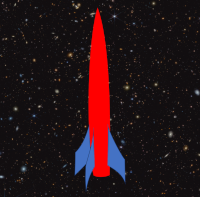
 |
Eager Space | Videos by Alpha | Videos by Date | All Video Text | Support | Community | About |
|---|


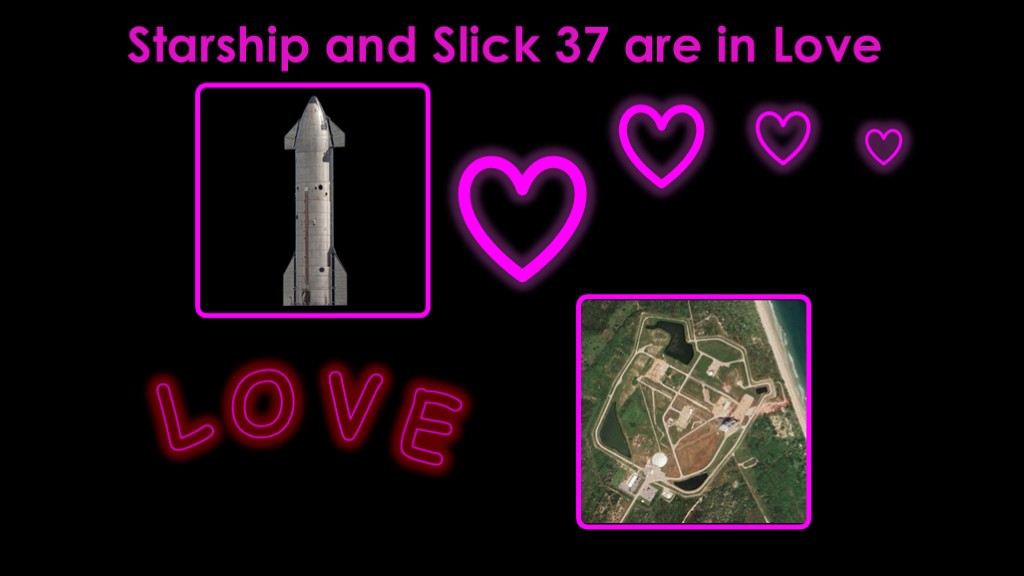
Starship and Slick 37 are in love.
And like many great love stories, it's a tale of chemical attraction, mutual admiration, and methane liquefaction.
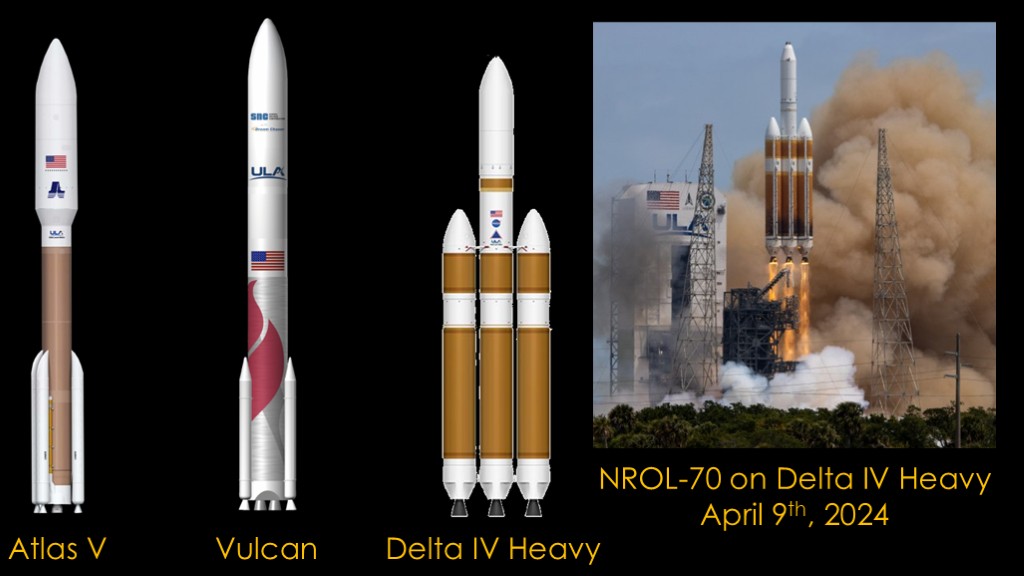
It all started with ULA having too many rockets. They were flying both the Atlas V and the Delta IV Heavy, and that meant two rocket factories and four rocket launch pads - two in Florida, two in California.
That spawned the creation of Vulcan, ULA's new launcher. Vulcan is much more like Atlas V than Delta IV Heavy, so they would be keeping slick 41 to launch Vulcan and vacating the Delta IV launch complex when the last Delta IV Heavy flew, and that took place on April 9th, 2024.
They had to vacate it because the launch complex is leased from the Space Force, and the lease says that you need to have solid plans to use the launch complex in the future if you want to keep it.
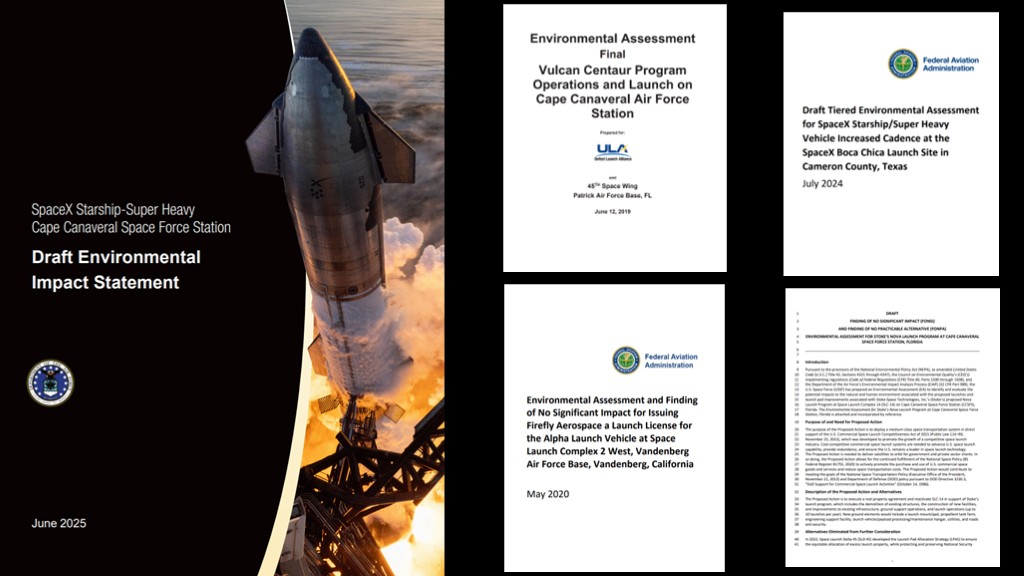
At that point it's the simple process of creating an environmental impact statement that addresses the impact of a proposed change.
It takes a lot of time and generates a document of unusual size, in this case 176 pages of fun. That's for a launch site that has been launching rockets for the last 20 years.
The reason the document is interesting is that - unlike pretty much any other documents you see related to the government and commercial space - nothing in the document is redacted and it's therefore possible to extract quite a bit of useful information.
I have to give credit to the study authors for creating the most metal title page I've seen; most environmental impact statements look like this.

Before we dive in, it's important to remember that the items in the Environmental impact statement are not necessarily things that the company will actually do.
Creating the environmental impact statement is hugely expensive and time consuming, and you therefore don't want to have to redo it in the future.
Because of that, you include things that you *might* decide to do in the future. Doesn't cost you much right now, might save a lot of time and money in the future.
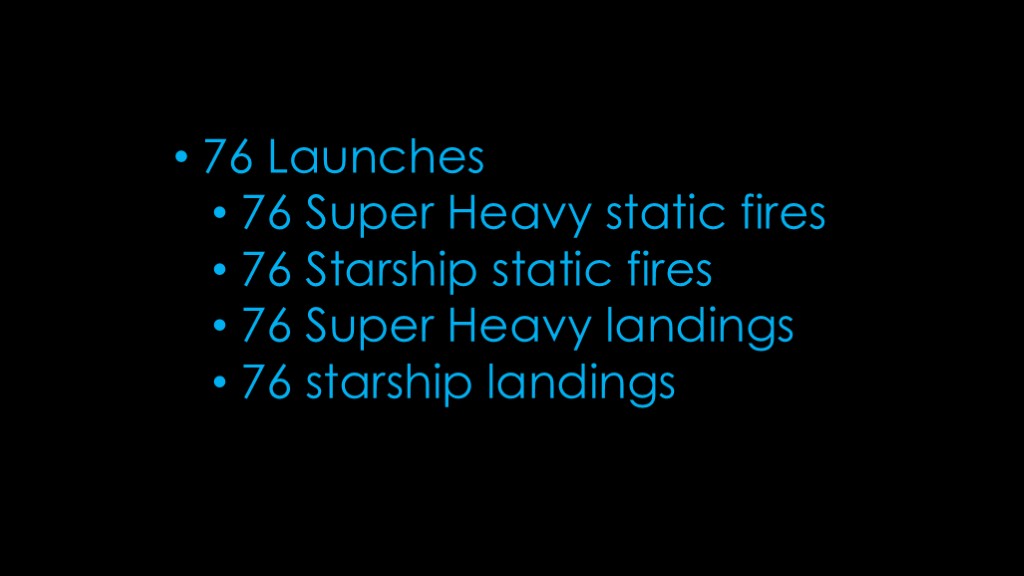
We learn early in the document that SpaceX is planning to launch up to 76 times per year.
That includes the launches plus static fires and landings for each stage.
There are many possible launch sites for Starship in Florida.
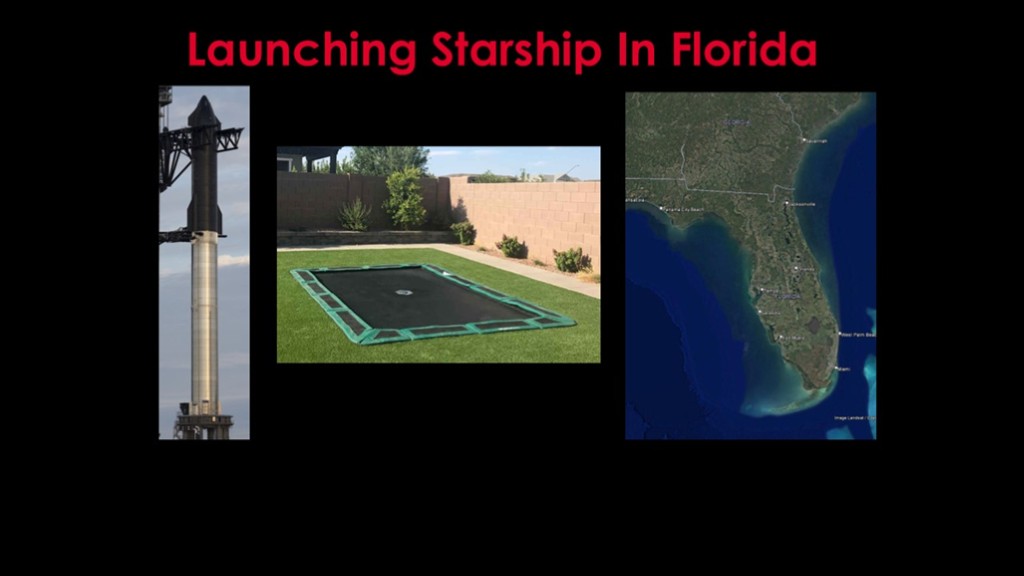
I talked about some launch options for starship in my previous video entitled "launching starship in Florida", but it's time to revisit that now.
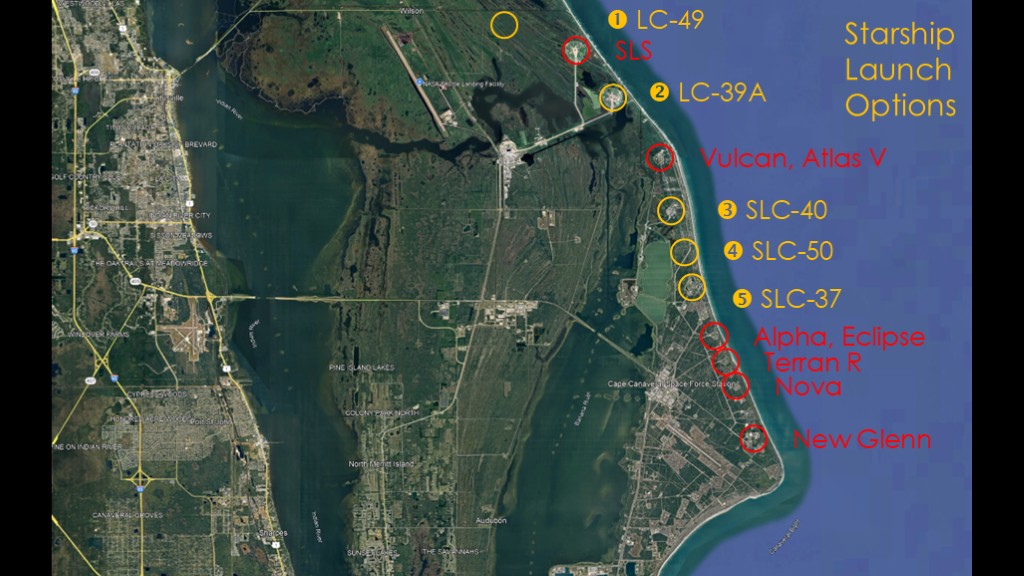
It will help to understand the different locations that were under consideration. First we need to know which launch pads are already allocated for specific rockets.
The pads on cape Canaveral space force station are known as "space launch complexes" with the acronym SLC, pronounced "slick". The pads on kennedy space center are just launch complexes, with the acronym LC, pronounced "el cee", though it should be pronounced as "lick".
At the north end, LC-39B is allocated to NASA's SLS.
Just to the south is ULA's slick 41, currently flying Vulcan and the remaining Atlas V rockets.
Farther south is slick 20, currently leased by Firefly for their Alpha and Eclipse rockets.
Slick 18 is leased by relativity for Terran R
Slick 16 is leased by Stoke for Nova
And finally, at the south end is the pad for Blue Origin's New Glenn at slick 34
It's a busy place without a lot of extra space.
Here are the proposed starship sites.
The first is launch complex 49 at the north end of kennedy space center, a proposed site to the north of the existing pads used for Apollo and Shuttle flights.
The second is historic LC-39A at Kennedy space center, currently leased to SpaceX and used for Falcon 9 and Falcon Heavy flights.
The third is slick 40, SpaceX's current Falcon 9 launch site in cape Canaveral space force station.
The fourth is probably a new one for you, slick 50 which is a brand new launch site location just to the south of slick 40.
And finally, slick 37 is a newly available site because Delta IV is no longer flying.
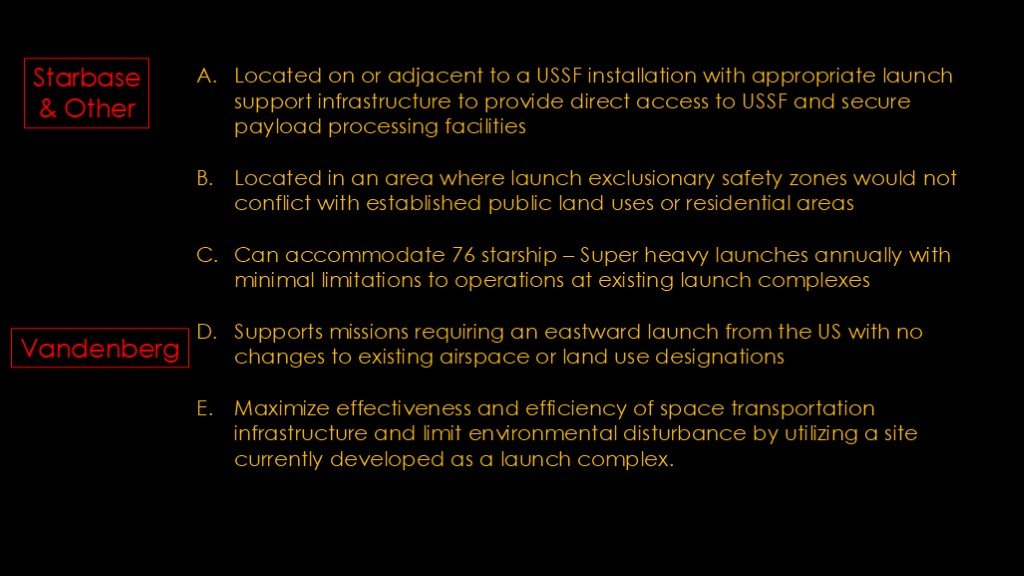
Under federal regulations, the air force needs to analyze reasonable alternatives to the proposed action.
These are the criteria they developed to evaluation the alternatives
Criteria A excluded Starbase at Boca Chica and some other east coast locations .
Criteria D excluded two options at Vandenberg in California as eastern launches are not allowed from that location.
That leaves us with 3 criteria to evaluate the 5 candidate sites
B says that it must not conflict with established public land uses, C says it needs to be able to support 76 launches with minimal limitations on other launch complexes, and E says it needs to be a current launch complex.
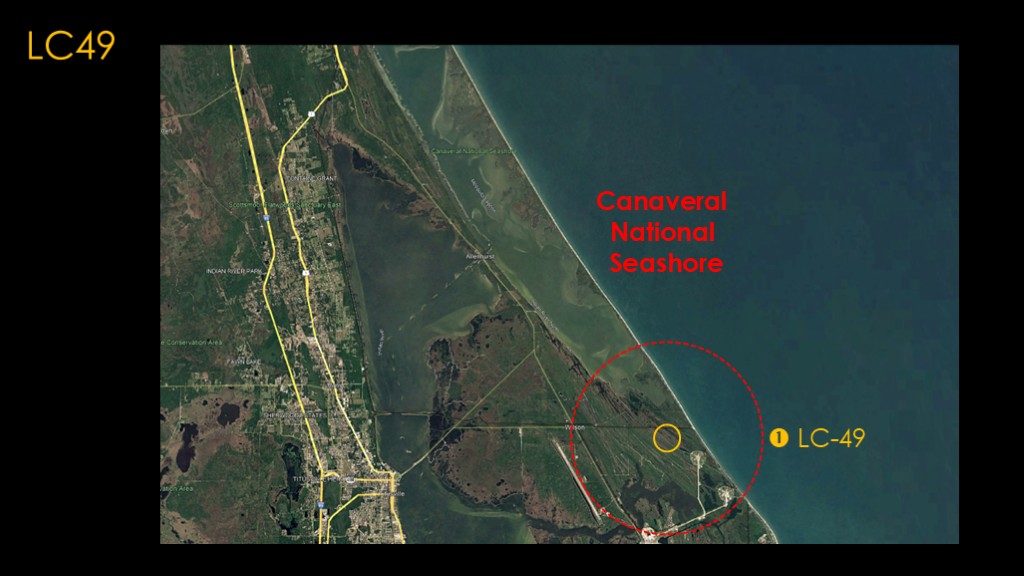
Just barely to the north of LC-49 is the Canaveral national seashore, which gets 1.6 million visitors a year. All of Kennedy is part of the Merrit island wildlife refuge.
The red circle is roughly where the exclusion zone would be for launches, which would conflict with established public land uses, as people would not be able to get to the southern beach.
It also fails standard C as it would not support an additional 76 launches per year and standard E as it's not an existing launch complex.
It fails all 3 of the criteria.

39A is interesting. SpaceX has approval for launching starship from 39A and supposedly that will be okay for 44 launches and 88 landings per year.
You can maybe draw the exclusion zone on the map to miss the road in Canaveral national seashore.
It is currently a very busy launch pad already and the assessment is that it could not support an additional 76 launches per year, and I think that's a fair analysis.
That leaves us the three options in cape Canaveral space force station
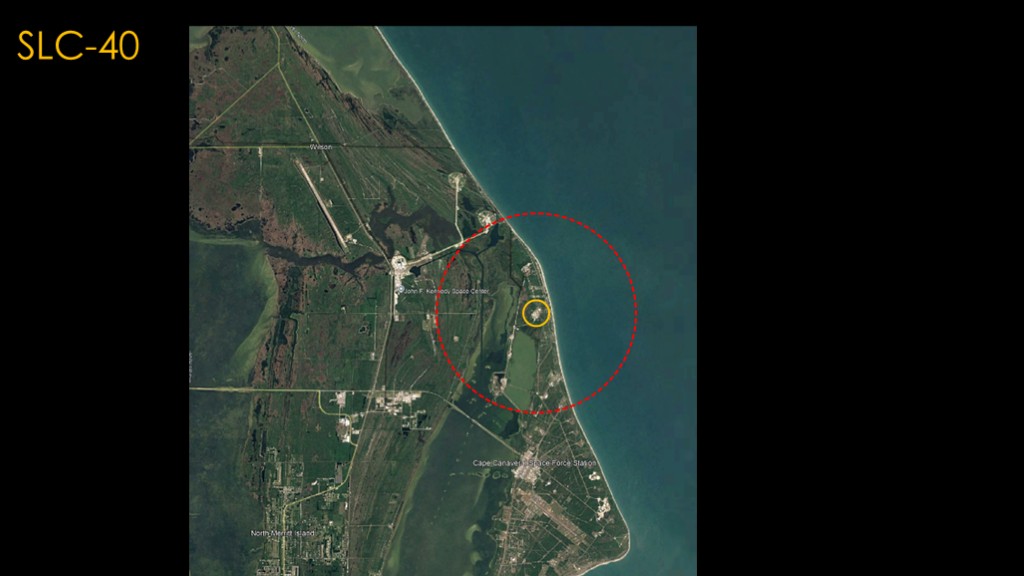
Slick 40 has some of the same issues - it's a very busy pad with Falcon and Dragon launches. The exclusion zone for both static fires and launches gets in the way of work at ULA's Slick 41 just north of slick 40, and the launch exclusion zone might include the access to pad 39A.
It fails the additional 76 launch capability as well.
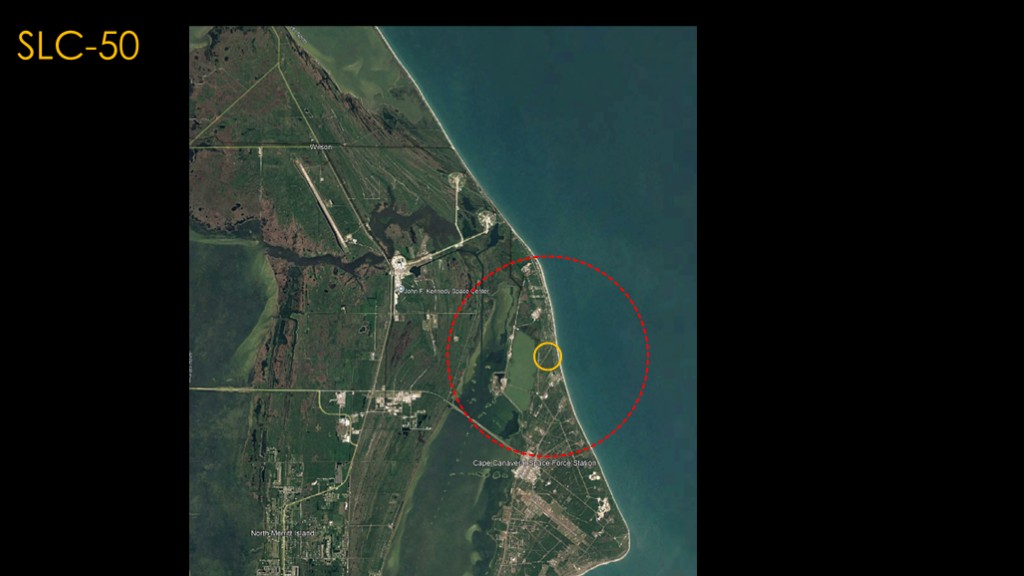
Slick 50 is a fun new pad location, and it fails because of that.
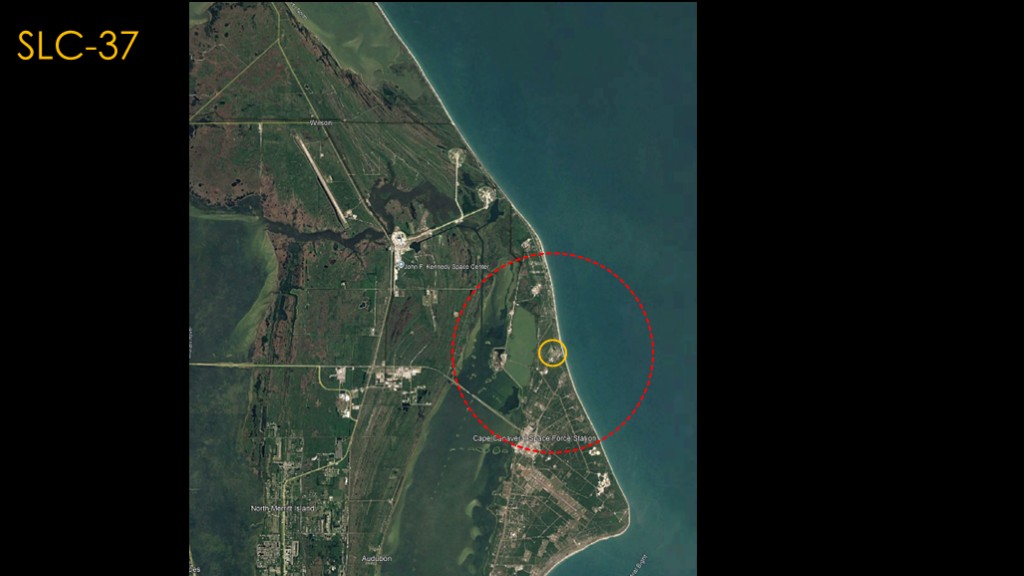
Which brings us finally to slick 37, which meets all the criteria, and it is the only location to do that. And it seems like a location that is decently far away from most of the other activity at the Cape.
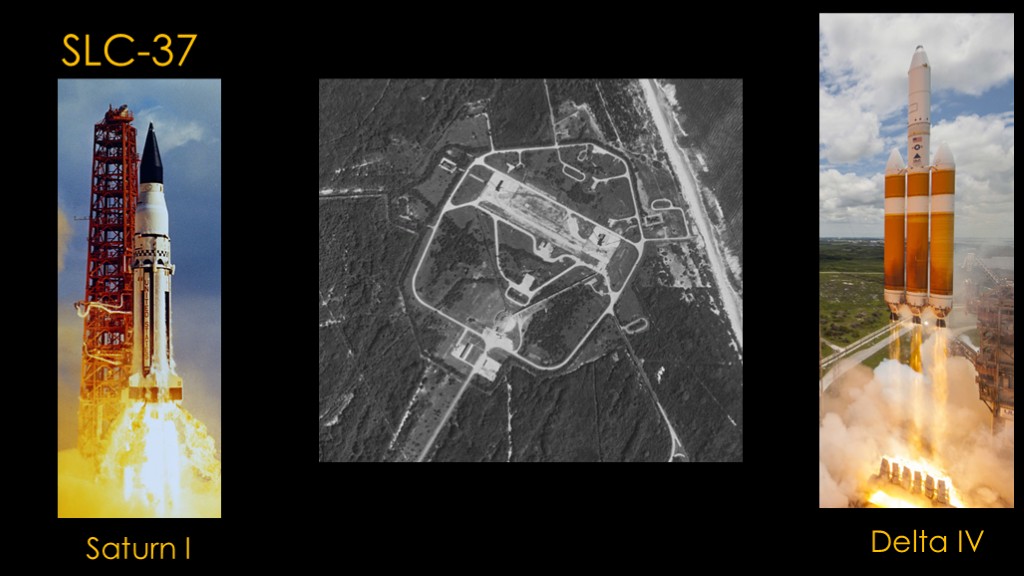
NASA build two launch complexes for the Saturn I rocket, LC 34 and LC 37.
LC-37 only hosted 8 launches of the Saturn I and IB rockets over 4 years and was mothballed in 1968.
34 years later, it was refurbished by Boeing to support launches of the Delta IV, and hosted 35 launches of the Delta IV Medium and Heavy variants.
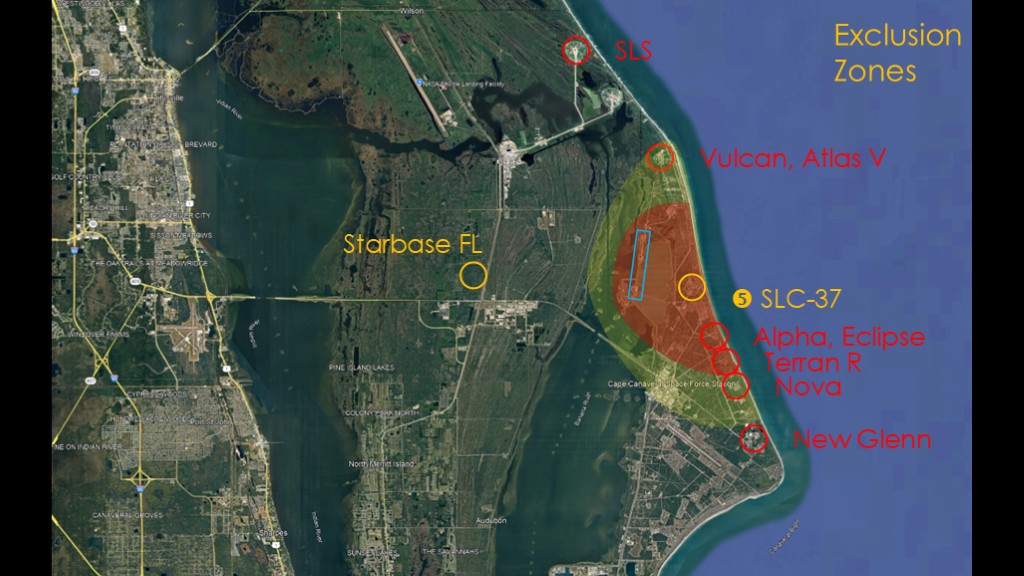
I do see a possible issue, however,
This is the static fire exclusion zone from the document, and we can see that it covers the launch pads for Firefly and Relativity. It does not cover ULA's launch pad at slick 41. It does, unfortunately cover the ULA integration buildings, which means they can do no work on those buildings during static fires.
If we add in the current launch exclusion zone, that shuts down any launch pad work by Stoke or ULA and a bunch of the main buildings for the space force station.
Specific exclusion zones seem to have been invented for starship - I could not find them in environmental impact statements for any other launcher.
That's not unreasonable given the size of Starship and the limited understanding of the explosion potential of rockets that use liquid methane and liquid oxygen.
It's also possible that these zones will shrink over time.
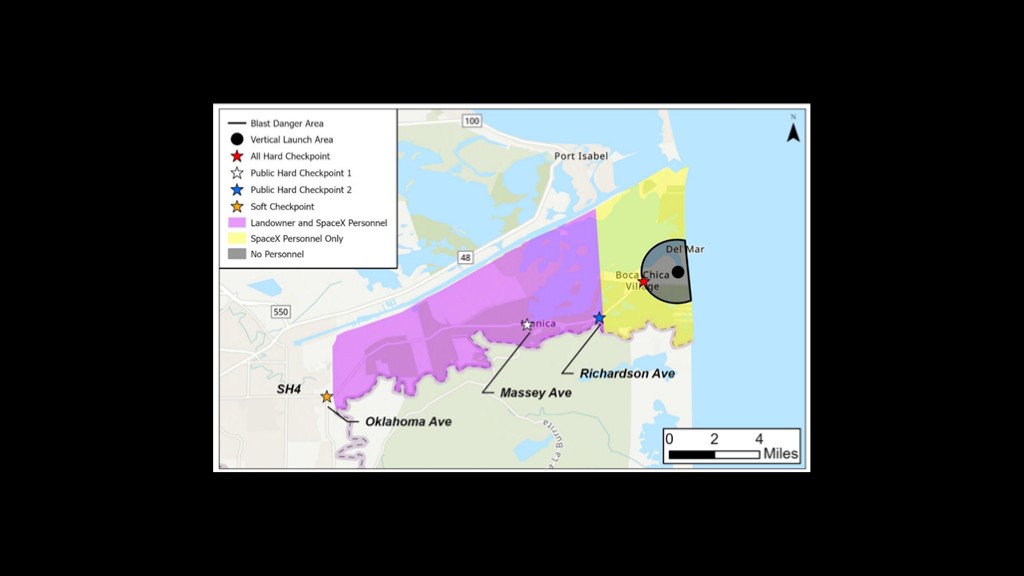
Looking at the Boca Chica exclusion zones, they allow spaceX employees beyond 1.5 miles, and the edge of the "spacex only" zone is 3.3 miles.
That's a lot smaller than the one for Slick 37.
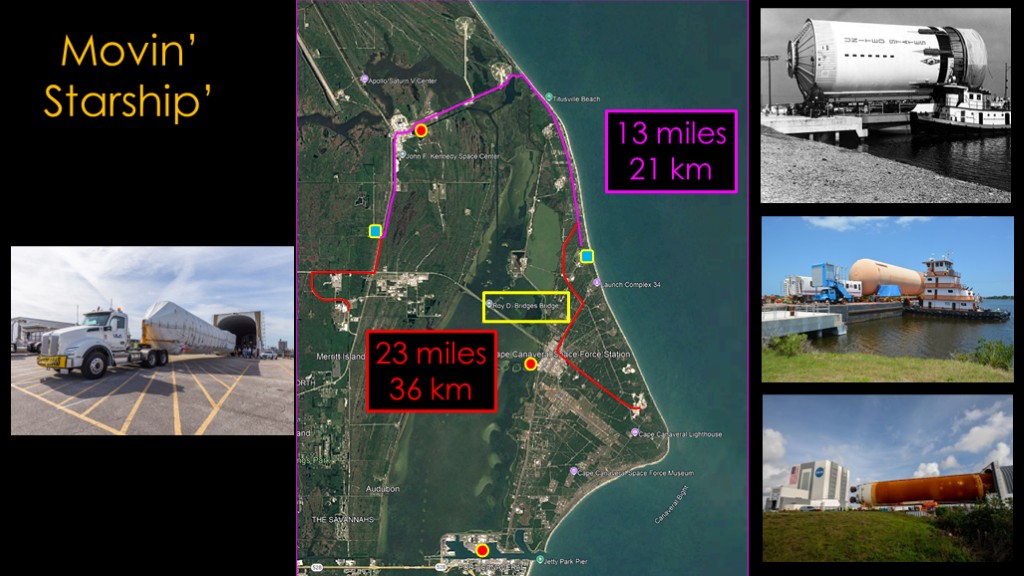
Starship will need to get to slick 37.
Super heavy and starship may be shipped horizontally from Brownsville near Boca Chica in Texas. A number of possible offloading locations are mentioned in the document:
There are the existing piers in Port Canaveral that SpaceX uses for Falcon 9 First Stages.
There are piers in cape Canaveral space force station.
And there is the Saturn Unloading Facility at kennedy space center near the vehicle assembly building, the unloading point for Saturn, Shuttle, and SLS components. ULA also unloads their rockets here.
Which one will they choose? I think it's pretty clear if we add in a two more pieces of information:
The blue square is the location of the SpaceX operations area near the kennedy visitors center where they currently process Falcon 9 stages. They are planning starship and super heavy manufacturing for this location.
They will need to get those stages from that location to the launch location at slick 37. There is really only one possibility. The roy d. bridges bridge can only carry 95,000 pounds, or about 47 tons, and an empty super heavy weighs far more than double that. And a busy bridge that is 3 miles long is a poor choice.
That means they need to go around the north side, and it's therefore not very surprising that the plan includes widening the beach side road - Phillips parkway - from slick 37 all the way up to the northern border with kennedy space center.
There is then a little section that goes near LC-39A, then down the Saturn causeway to the VAB, then down the main road to the operations site. There are no details for what changes might be needed for the part of the route in kennedy space center, if any.
The whole route is about 13 miles or 21 kilometers. That seems like a long distance, but New Glenn uses the same route but adds in the sections in red, and their route is 23 miles or 36 kilometers in length.
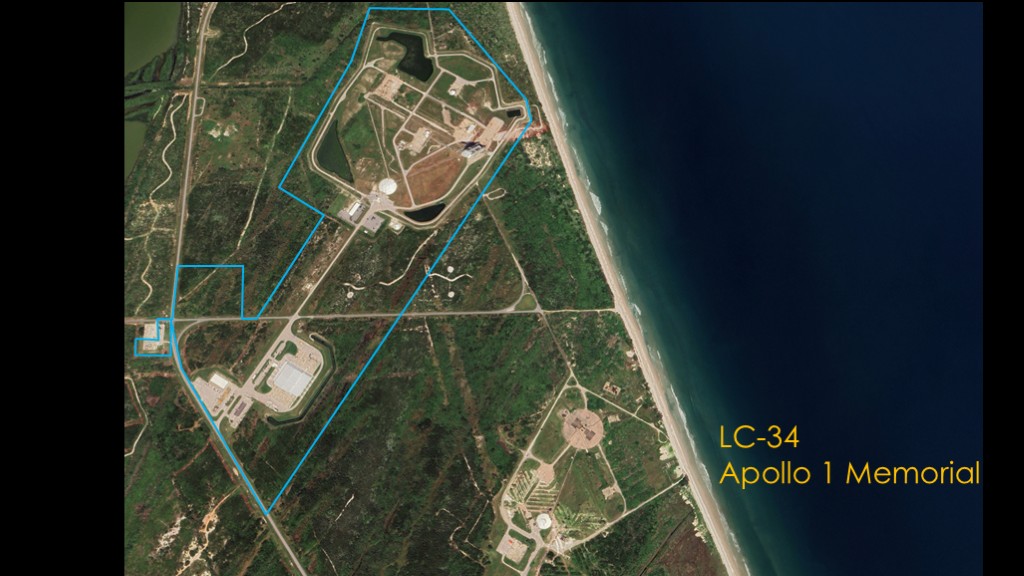
Here is the current arrangement of Slick 37. That little pad in the lower right is launch complex 34, the location of the Apollo 1 memorial.
The first interesting thing is that the lease areas are not the entire area that we see. The lease only covers the area inside the blue boundary line. What looks like a big area turns out to be much smaller, perhaps only half the size. The advantage of using an existing site is that the use is much less impactful and it's much easier to get approval; the downside is that you are limited in the space you use.
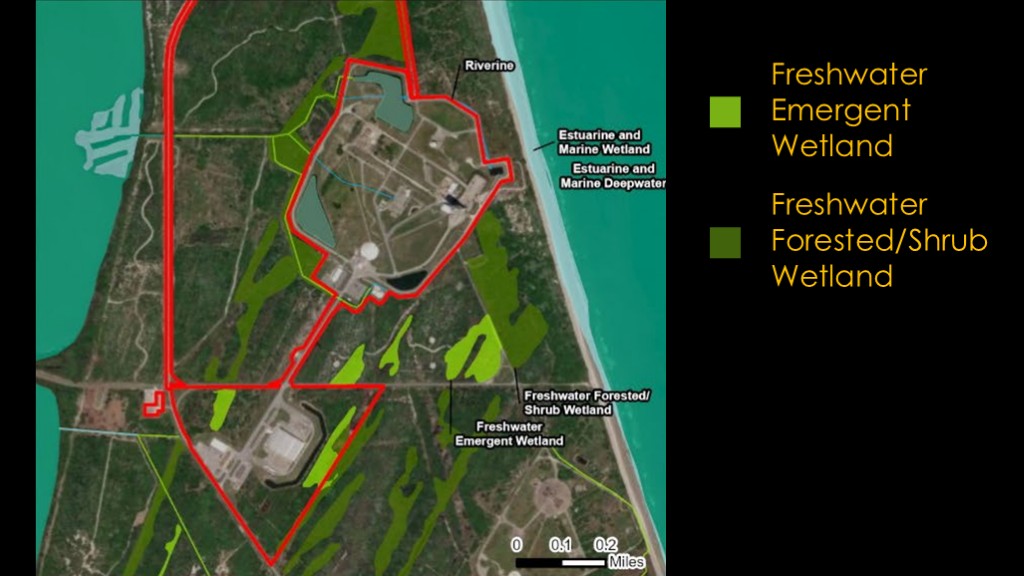
If we add in the surrounding wetlands, it becomes clear why it's preferred to stay within the existing launch pad footprint - going outside would involve eliminating wetlands and that would be much more impactful, and therefore more difficult.
That's the big reason that new launch pad locations were excluded.
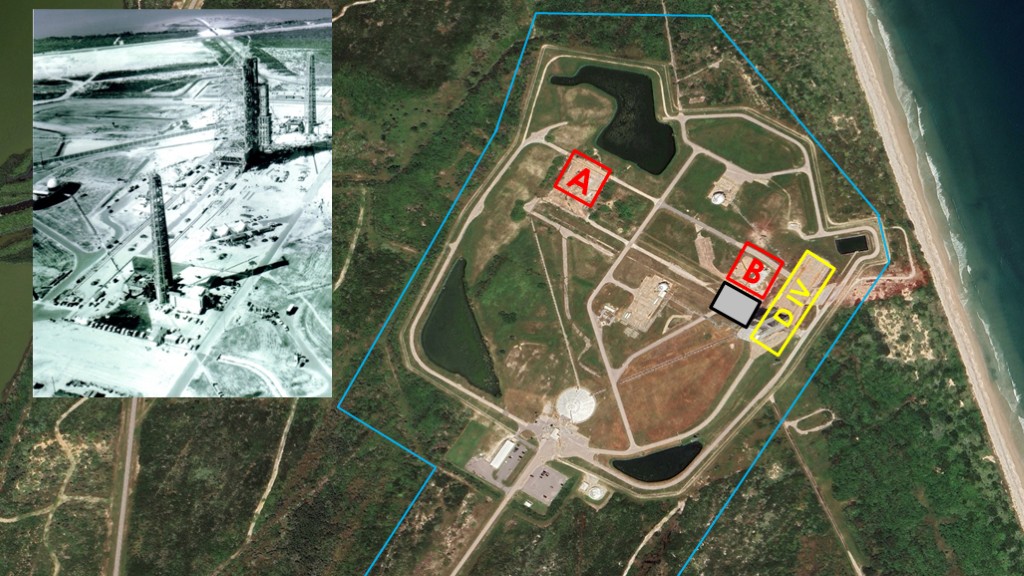
Let's zoom in on the launch pad area.
Launch Complex 37 had a weird design. It featured two launch pads, with pad A on the left and pad B on the right. There was a movable service structure that could move on rails between the two pads. It turned out that this was not a useful idea, and for Saturn, pad b was the only one that was used.
When the launch complex was repurposed for Delta IV, they decided they didn't like either pad and used the area to the east of pad B. The delta IV used a large service structure that surrounded the rocket and then was rolled back on rails to the top right of that area.
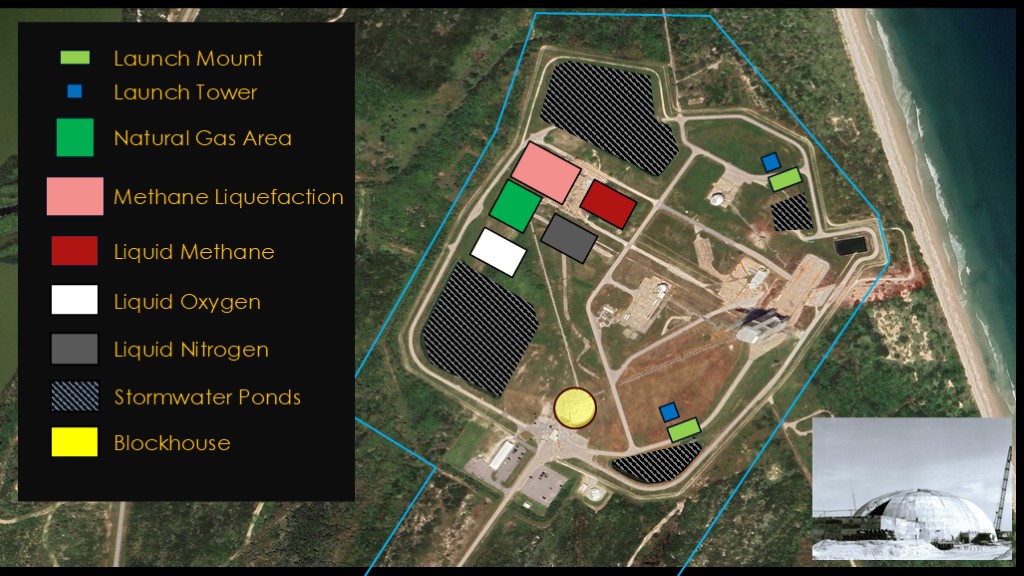
SpaceX doesn't like the original pads either, nor does it like the delta IV pad.
There will be two launch mounts in these locations, about 500 meters or 1700 feet apart, and two launch integration towers right next to the launch mounts. The launch mounts will have flame trenches underneath, presumably similar to the second launch pad at Boca Chica.
There is a natural gas area that is planned to be attached to the main natural gas supply for CCSFS and will treat the gas to remove heavy compounds, a methane liquefaction system, and liquid methane storage.
The document describes an air separation unit that will generate the liquid oxygen and liquid nitrogen required by the vehicles, but it didn't make it onto this diagram. All we see here is storage areas for the liquid oxygen and liquid nitrogen.
The stormwater ponds are expanded to have more area. These will also function to catch the deluge water from the launches, which will be captured, treated, and reused.
The document mentions two additional catch towers, but there is no indication where they would be located.
Near the entrance is the original blockhouse, which is a historical building and will therefore be kept and used for administrative purposes.
And that's the launchpad area.
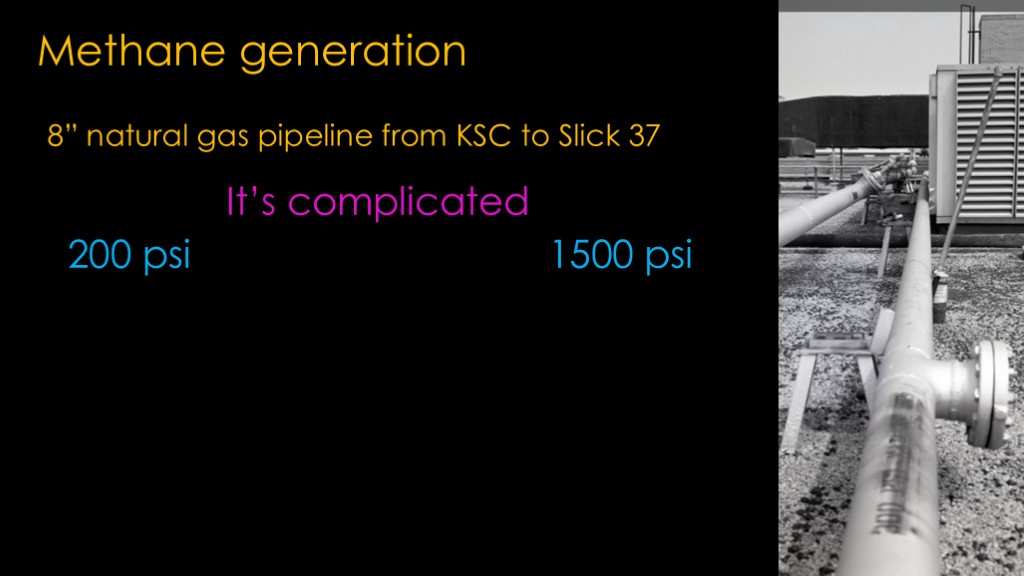
There is an 8" natural gas pipeline from kennedy space center to slick 37.
Since they are building a methane purification and liquefaction plant, can we figure out how much liquid methane they can generate from that pipeline
The answer is that it's complicated. Pipeline pressures run from 200 psi to about 1500 psi, and we don't know what pressure this pipeline uses.
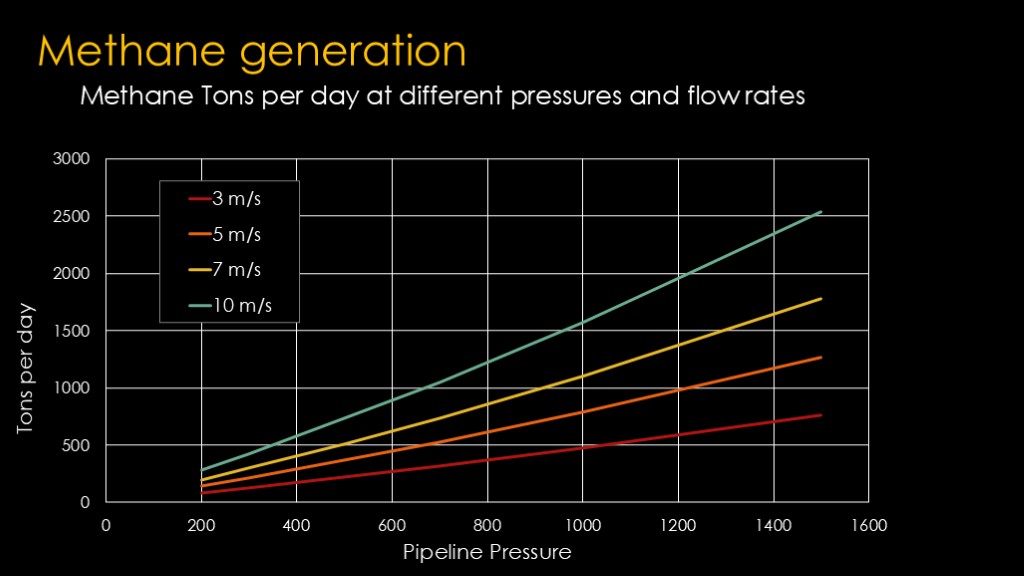
The problem is that the pressure affects both the density of the natural gas and the flow rate. Flow rates from 3 meters per second to 10 meters per second are typical, so I cooked up a chart that showed how many tons per day you could pull out at different pressures and different flow rates.
200 psi at a flow rate of 3 meters per second gives you 84 tons a day. 1500 PSI at 10 meters per second gives you 2530 tons per day.
That is a huge variance, and without knowing the pressure and velocity, I don't think we an tell
Maybe if we come from the other direction and look at how much methane they need.
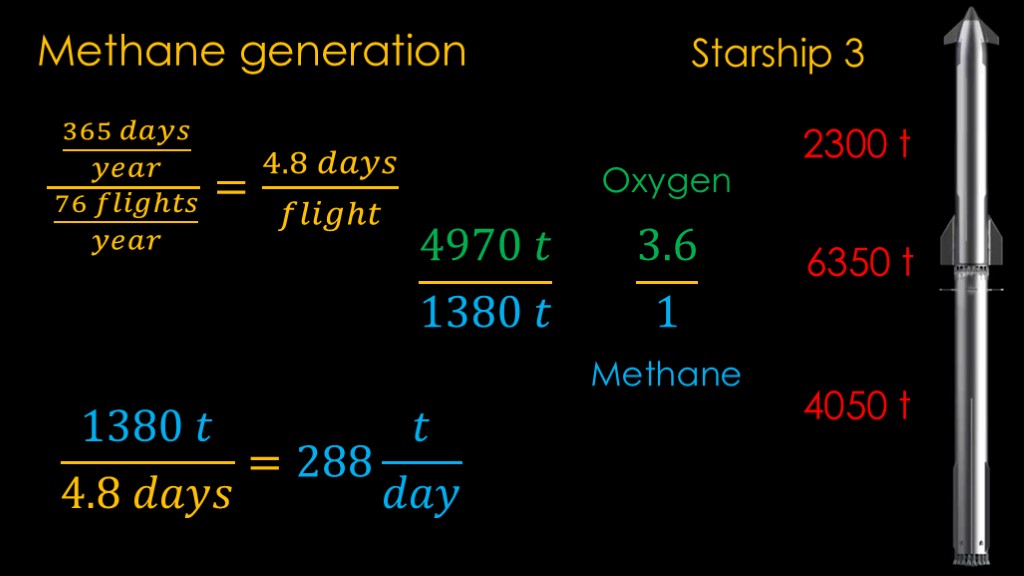
76 flights a year means a flight every 4.8 days.
Starship 3 will carry 4050 tons of propellant in the first stage and 2300 tons in the second stage, for 6350 tons total.
That's both liquid oxygen and liquid methane. We know that the Raptor mixture ratio is about 3.6 parts oxygen to 1 part methane, and that means the 6350 tons end up being 4970 tons of liquid oxygen and 1380 tons of liquid methane.
Ignoring methane losses, methane used in static firing and other tests, to be able to refuel a booster every 4.8 days would require 288 tons of methane per day.
That's not really very much.
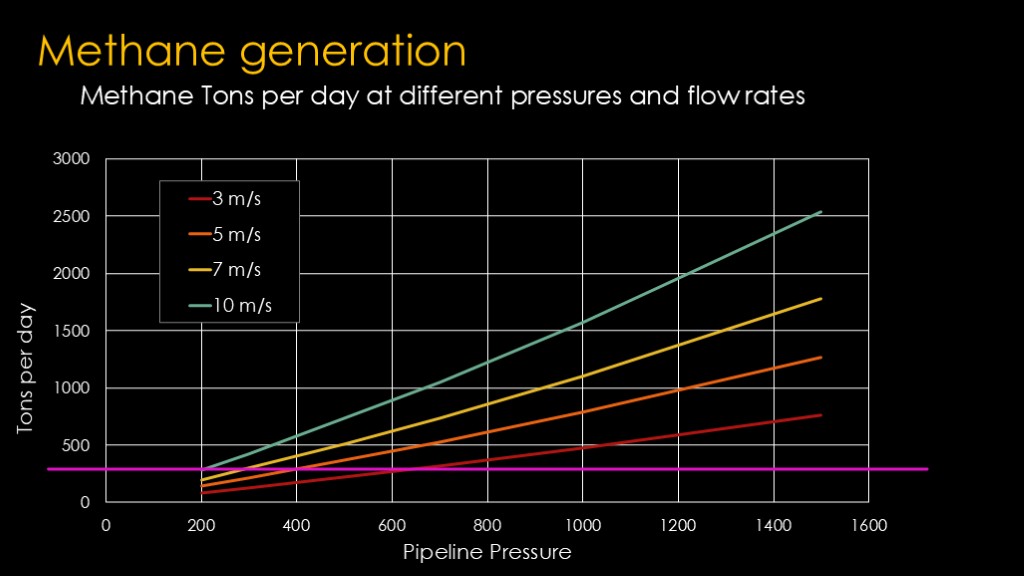
The pink line shows the required amount.
It seems likely that they can produce enough liquid methane for their expected launch rate.
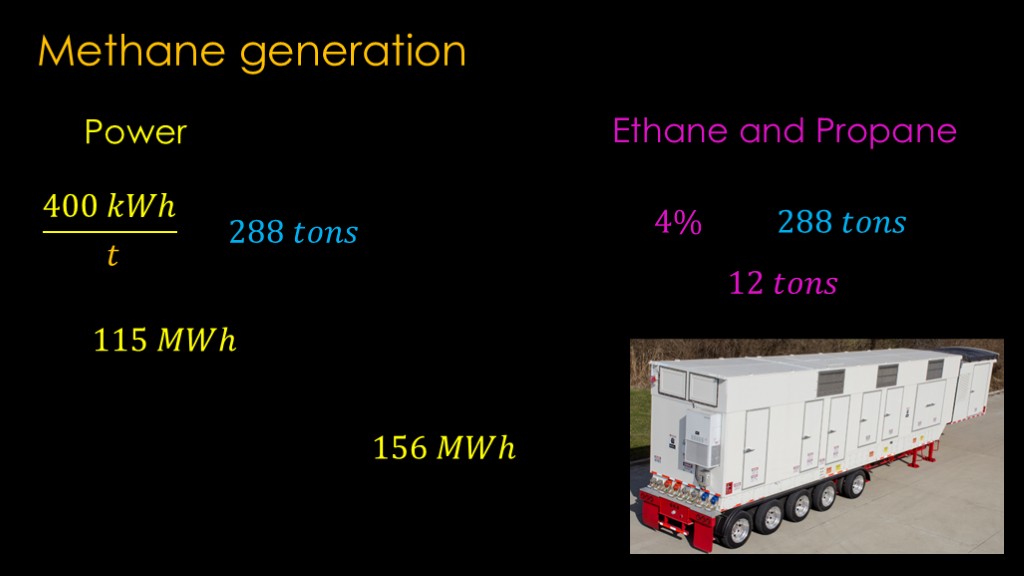
There are two issues to solve.
The first is powering the methane purification and liquefaction plant.
The processing will take around 400 kilowatt hours per ton, and for 288 tons that means 115 megawatt hours of energy.
There's also a pesky problem. About 4% of the natural gas that is supplied to Cape Canaveral Space Force Station is ethane plus a little bit of propane, and that means they will generate about 12 tons per day of those by products per day. You could truck them off the site.
Or you could buy a small natural gas turbine generator, which will generate about 13 megawatt hours per ton of ethane, and with 12 tons that means about 156 megawatt hours of electricity.
The plant can be self-powered with the excess ethane and propane, and that is very slick. It will generate a little bit of surplus power.
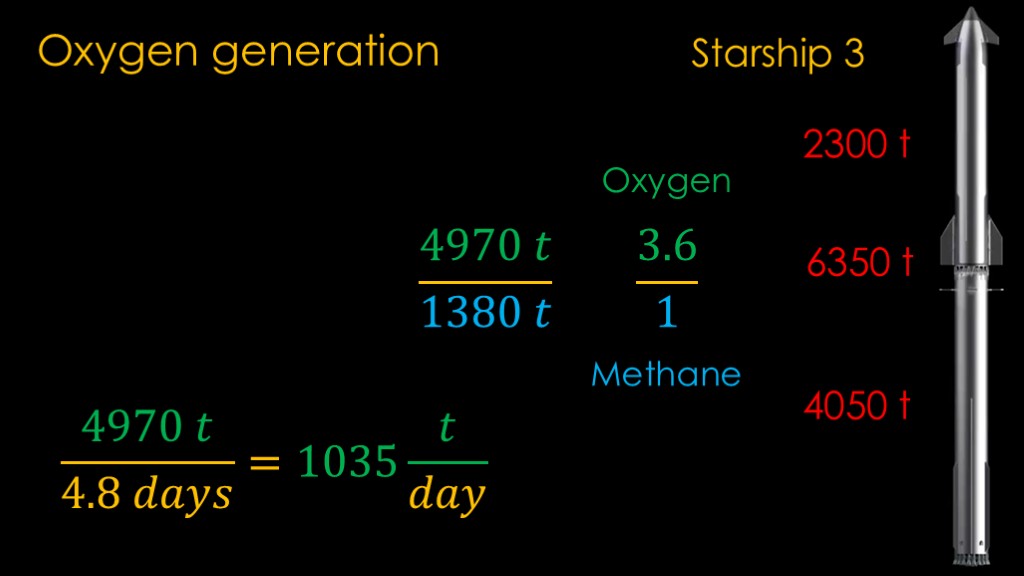
Using the same math with liquid oxygen, we determine that we need to generate a little over a thousand tons every day.
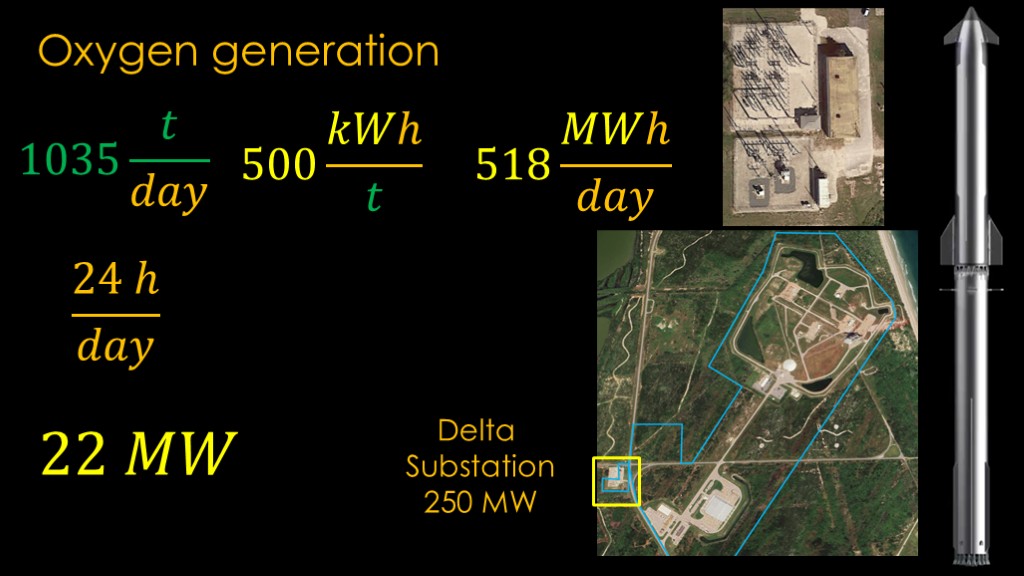
Liquid oxygen generation is purely about power. It takes around 500 kilowatt hours to create a ton of liquid oxygen, which means we need 518 megawatt hours of electricity each day, or 22 megawatts continuous power.
Is that much power available?
It turns out that there is a substation down at the left corner of the site named the delta substation, and it can provide 250 megawatts of power.
SpaceX easily has the power to make the liquid oxygen they need.
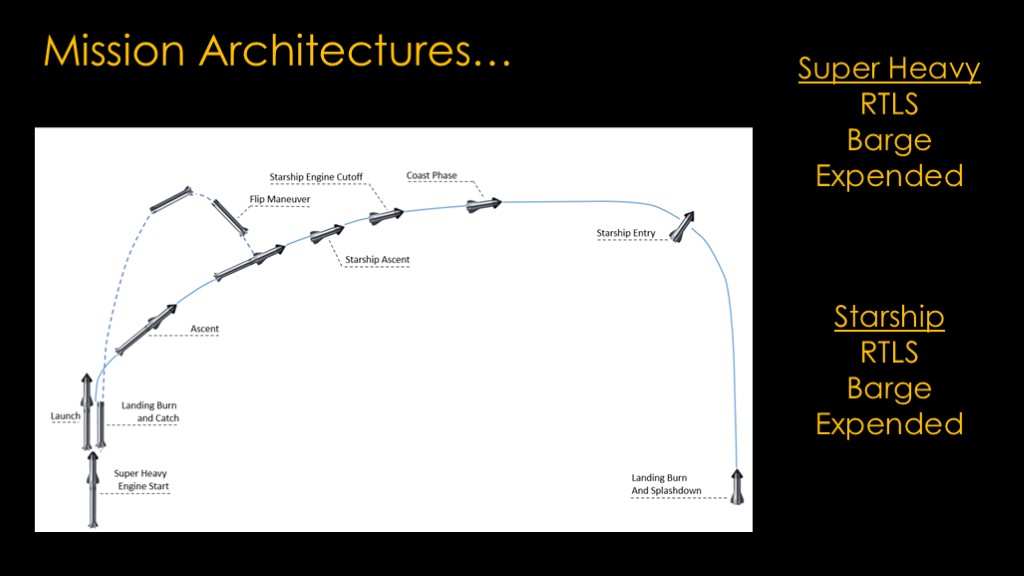
SpaceX is keeping their options open for architectures.
For both super heavy and starship, they describe return to launch site, barge landing, and expendable mission architectures.
The only one that really looks interesting is barge landings of super heavy.
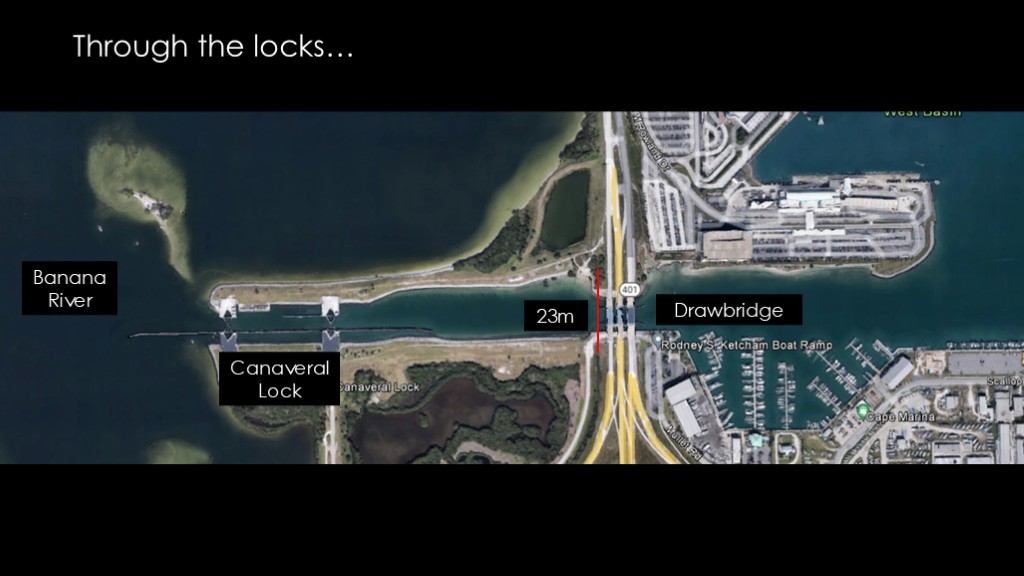
One problem with a barge landing is that you can't transport the vehicle back to the kennedy space center dock in vertical orientation. The electrical power lines that provide power to CCSFS are only elevated 23 meters above the water, and super heavy is about 70 meters high.
That means the only option would be to lower the booster after landing to a horizontal position. That's probably not something to do at sea and would likely be done at the Falcon 9 booster docks. It would be a significant hassle.
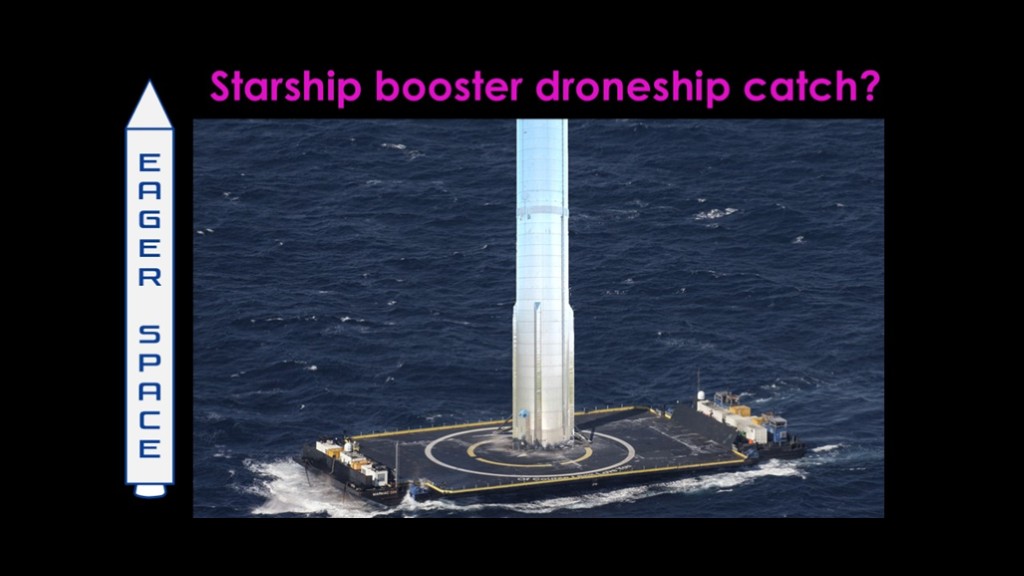
If you want more information there's a previous video on the concept.
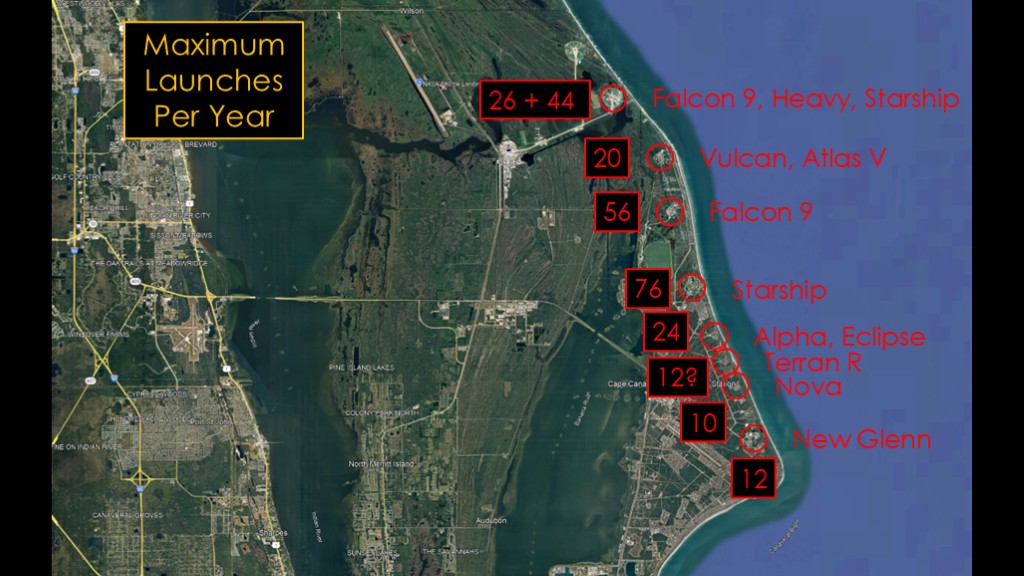
According to the document, here are the currently permitted launch rates in cape Canaveral space force station.
I was surprised to see that Blue Origin's New Glenn only supports 12 flights. The question mark for Terran R is because 12 is the number for Terran 1 and I couldn't find anything for Terran R.
If everybody hit their top rate, that would be 210 launches per year.
That is ignoring launch complex 39A at kennedy space center, which could do 26 Falcon 9/Heavy launches and 44 starship launches, adding another 70 launches to the total.
That obviously won't happen, but those are some pretty big plans...
And that's the story of slick 37, and why it's such a good location for Starship.

https://www.youtube.com/watch?v=Bg0tFRea0wA&pp=0gcJCdgAo7VqN5tD